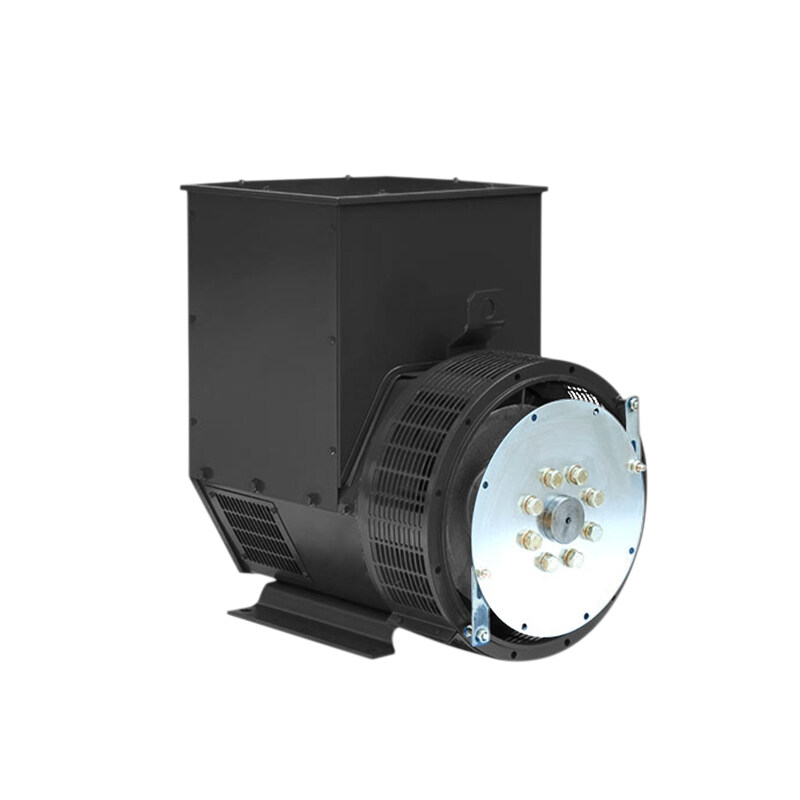Everything You Need to Know About the 25 kW Brushless Alternator
The world of alternators is vast and diverse, catering to a range of needs from small residential uses to large industrial applications. Among these, the 25 kW brushless alternator stands out as a versatile and efficient choice for many different scenarios. In this comprehensive guide, we will delve deep into what makes the 25 kW brushless alternator a popular option, its applications, advantages, and maintenance tips.
What is a 25 kW Brushless Alternator?
A 25 kW brushless alternator is a type of electrical generator that converts mechanical energy into electrical energy without the use of brushes. The "25 kW" indicates its power output, meaning it can generate up to 25 kilowatts of electrical power. The term "brushless" refers to its design, which does not include the traditional brushes that make contact with the rotor to conduct electricity. Instead, it uses a more advanced mechanism involving electronic control and permanent magnets.
Components and Working Principle
The main components include the stator, rotor, and a rectifier. The stator is the stationary part of the alternator that contains windings of wire. The rotor, which is the rotating part, generates a magnetic field. As the rotor spins within the stator, it induces an alternating current (AC) in the stator windings. The rectifier then converts this AC into direct current (DC), which can be used or stored as needed.
Why Choose a Brushless Design?
The brushless design offers several benefits. Firstly, it reduces maintenance requirements as there are no brushes to wear out and replace. Secondly, it enhances the efficiency and longevity of the alternator since there is less friction and heat generation. This design also contributes to more stable and reliable performance, which is crucial in many applications.
Applications of a 25 kW Brushless Alternator
The versatility makes it suitable for a wide range of applications. Here are some common uses:
Residential and Commercial Backup Power
In residential and commercial settings, a brushless alternator can provide reliable backup power during outages. Its capacity is sufficient to power essential appliances, lighting, and even HVAC systems, ensuring minimal disruption during power failures.
Renewable Energy Systems
For renewable energy systems such as wind turbines and hydroelectric generators, the 25 kW brushless alternator is a perfect fit. Its efficiency and durability make it ideal for converting renewable energy sources into usable electrical power.
Marine and RV Applications
In marine vessels and recreational vehicles (RVs), space and reliability are critical. The compact design and robust performance of the brushless alternator make it an excellent choice for providing on-board power, whether for navigation systems, lighting, or other electrical needs.
Industrial and Agricultural Use
Industries and agricultural operations often require reliable power sources for machinery and equipment. The brushless alternator can handle the demands of such environments, providing consistent power for various applications, from irrigation systems to manufacturing processes.
Advantages of Using a 25 kW Brushless Alternator
Choosing a 25 kW brushless alternator comes with numerous advantages, making it a preferred option for many users. Let's explore some of these benefits:
High Efficiency
One of the primary advantages is its high efficiency. The absence of brushes means there is less mechanical resistance and heat loss, which translates to more efficient power generation. This efficiency can result in significant cost savings over time, especially in large-scale applications.
Low Maintenance
Brushless alternators require significantly less maintenance compared to their brushed counterparts. The elimination of brushes, which are prone to wear and tear, means fewer components need regular inspection and replacement. This reduces downtime and maintenance costs, making the 25 kW brushless alternator a cost-effective solution.
Durability and Longevity
The robust design enhances its durability and longevity. Without brushes to wear out, these alternators can operate for extended periods with minimal degradation in performance. This makes them ideal for applications where reliability is critical.
Stable Performance
The electronic control systems in brushless alternators contribute to more stable performance. They provide better voltage regulation and can handle varying loads more effectively. This stability is essential for sensitive equipment that requires consistent power quality.
Installation and Maintenance Tips
Proper installation and maintenance are crucial for maximizing the performance and lifespan of your brushless alternator. Here are some tips to help you get the most out of your investment:
Installation Guidelines
1. Site Selection: Choose a location that is dry, well-ventilated, and free from dust and debris. Ensure the alternator is mounted securely to reduce vibrations.
2. Electrical Connections: Use high-quality cables and connectors to ensure secure and reliable electrical connections. Follow the manufacturer's guidelines for wiring and grounding.
3. Cooling System: Ensure the alternator has adequate cooling. Proper ventilation or an auxiliary cooling system may be necessary to prevent overheating during operation.
4. Load Management: Avoid overloading the alternator by monitoring the power requirements of connected devices. Distribute the load evenly to prevent undue stress on the system.
Maintenance Tips
1. Regular Inspections: Conduct regular inspections to check for signs of wear, loose connections, or other potential issues. Address any problems promptly to prevent them from escalating.
2. Cleaning: Keep the alternator clean and free from dust and debris. Use compressed air to blow out any accumulated dust and wipe down surfaces with a clean, dry cloth.
3. Lubrication: Follow the manufacturer's recommendations for lubrication of moving parts. Proper lubrication can reduce friction and wear, extending the life of the alternator.
4. Software Updates: If your brushless alternator includes electronic control systems, ensure that any firmware or software is kept up to date. Manufacturers often release updates to improve performance and address known issues.
Common Issues and Troubleshooting
Despite their reliability, the brushless alternators can encounter issues. Here are some common problems and troubleshooting tips:
Overheating
Symptoms: The alternator becomes excessively hot to the touch, and performance may degrade.
Causes: Overheating can be caused by insufficient cooling, overloading, or dirty components restricting airflow.
Solutions: Ensure proper ventilation and cooling. Clean the alternator regularly and avoid overloading it. If the problem persists, consult a professional.
Voltage Fluctuations
Symptoms: The output voltage varies significantly, which can affect connected devices.
Causes: Voltage fluctuations can result from poor regulation, faulty components, or unstable input power.
Solutions: Check all electrical connections and ensure they are secure. Verify the stability of the input power and consider using a voltage regulator if necessary.
Unusual Noises
Symptoms: The alternator produces unusual noises, such as grinding or whining sounds.
Causes: Noises can be due to mechanical wear, loose components, or bearing issues.
Solutions: Inspect the alternator for any loose or damaged parts. Lubricate moving components as recommended and replace worn bearings if needed.
Future Trends in Brushless Alternator Technology
The technology behind brushless alternators, including the 25 kW brushless alternator, continues to evolve. Here are some future trends to watch for:
Enhanced Efficiency
Research and development efforts are focused on further improving the efficiency of brushless alternators. This includes advancements in materials, design, and electronic control systems to reduce losses and increase power output.
Smart Monitoring and Diagnostics
The integration of smart monitoring and diagnostic systems is becoming more prevalent. These systems can provide real-time data on the alternator's performance, identify potential issues before they become serious problems, and optimize maintenance schedules.
Renewable Energy Integration
As the demand for renewable energy sources grows, brushless alternators are being designed to better integrate with these systems. This includes improvements in compatibility with wind, solar, and hydroelectric power generation.
Compact and Lightweight Designs
The trend towards more compact and lightweight designs continues, making brushless alternators more versatile and easier to install in a wider range of applications.
Conclusion
The 25 kW brushless alternator is a powerful and reliable solution for a variety of applications, from residential backup power to industrial machinery. Its high efficiency, low maintenance requirements, and durable design make it a cost-effective choice for those in need of consistent and dependable electrical power. By understanding its components, applications, advantages, and maintenance needs, you can make the most of this advanced technology and ensure it serves you well for years to come.
Whether you are looking to power your home during outages, integrate renewable energy sources, or support industrial operations, the 25 kW brushless alternator is a versatile and efficient option worth considering. With ongoing advancements in technology, the future looks bright for this reliable workhorse of the electrical world.


